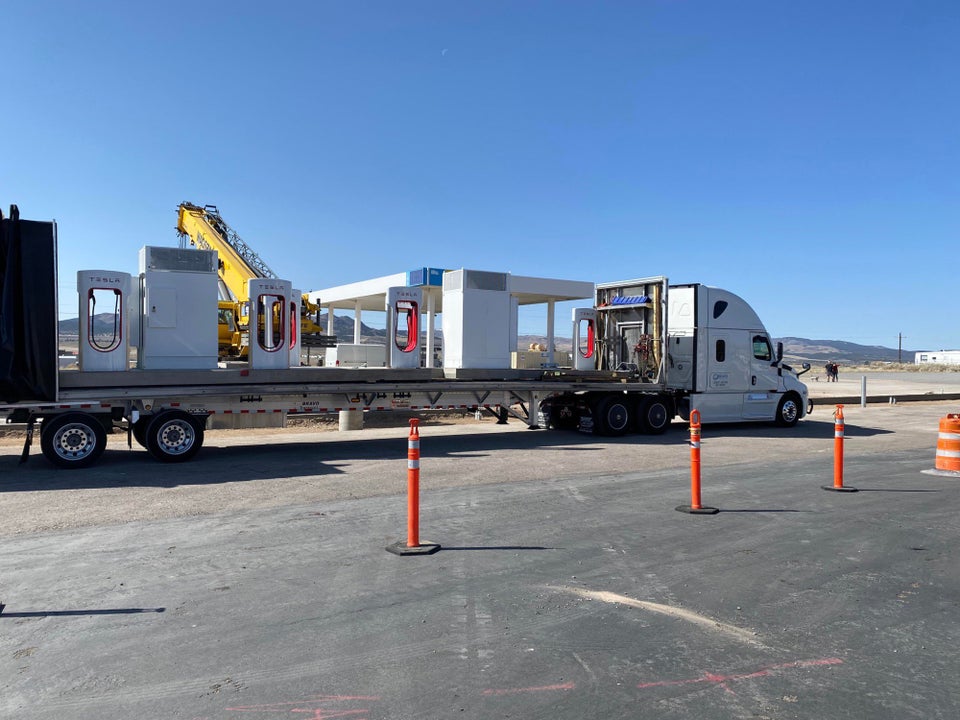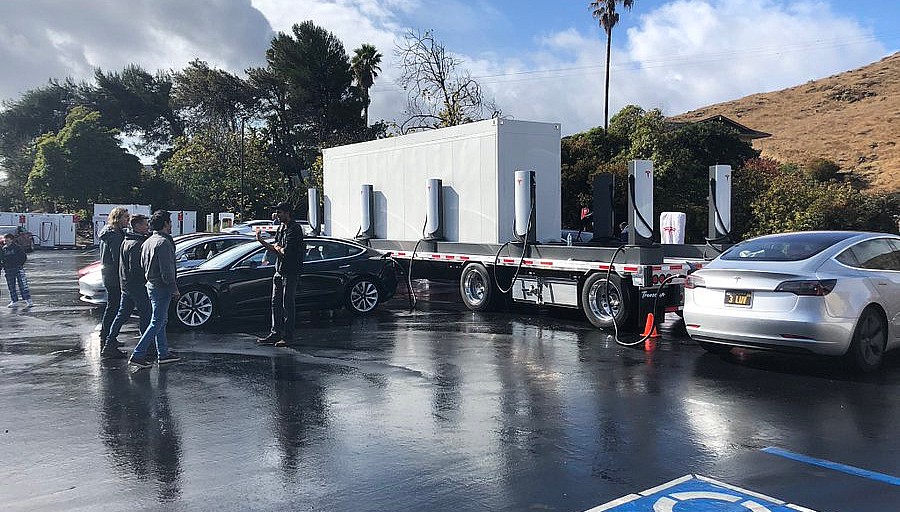Not as a replacement for electricity, but as a supplement to it.
This is according to an article in today's Telegraph anyway. BMW has announced that it is pushing ahead with the development of hydrogen powered vehicles following a short run of a hydrogen powered luxury X5 SUV. BMW is giving several reasons for this, namely:-
Not all countries have enough charging points and infrastructure to provide all customers to swith to pure electromobility.
They believe that the mobility of the future needs "more than one leg to stand on" and that hydrogen vehicles will be a meaningful complement to e-mobility.
BMW are following Renault and Toyota in hedging their bets amid doubts that electric cars can be produced in sufficient volume and some signs of waning interest in EV's. Renault unveiled a prototype hydrogen SUV last year, Toyota have had the Mirai for years, but it hasn't sold well outside Japan.
To be fair Toyota are producing more EV's as well.
I suppose it makes sense to not put all your eggs in one basket, considering all the uncertainty in the world at the moment.
BMW look at hydrogen
5 posts
• Page 1 of 1
BMW look at hydrogen
"Facts do not cease to exist because they are ignored" - Aldous Huxley
- cromwell
- Posts: 9457
- Joined: 26 Nov 2012, 13:46
- Location: Wakefield, West Yorkshire.
Re: BMW look at hydrogen
Cromwell wrote:Not all countries have enough charging points and infrastructure to provide all customers to switch to pure electromobility.
Like the UK, for instance.
Cromwell wrote:I suppose it makes sense to not put all your eggs in one basket,
Except to the zealots. I always said that this would happen. As time goes by more and more sensible heads are looking at viable alternatives to fossil fuels and EVs. These are not just for transport, but also for industry, farming, flying and clothing. Polyester is the most widely produced fibre in the world making up almost 55% of all fibres used, mostly for clothing; and its feedstock is... oil.
Those protesters from Just Stop Oil are going to be naked as they glue themselves to the roads. Oh, hang on, superglues are oil based as well...
-

Workingman - Posts: 22114
- Joined: 26 Nov 2012, 16:20
Re: BMW look at hydrogen
Zealots.
You know who the zealots are? Those who refuse to accept the world the way it is and insist on being duped, over and over and over again by the press and the mainstream vehicle manufacturers.
Reality?
Shell, you know those people who sell fossil fuels and also make Hydrogen from natural gas??? They bought a company who is going to deploy 40,000 EV charge points in the UK. That doubles what we have to day and is also separate from the 30,000 the Government intend to deploy.
What did Shell do next? It closed all its consumer Hydrogen filling points. ALL of them in the entire country.
I first came across the BMW fairy story of Hydrogen 15 years ago whilst working for Linde Gas (the largest producer of Hydrogen in the world at the time).
Do you know how many consumer HFCV BMW has brought to market, available to consumers, since? Zero!
Now don't all believe me at once. Let's listen to someone who actually knows what he is talking about.
https://youtu.be/Xj900aBPkiY?t=626
Do, please, get to the parts where he talks about shipping and air freight and heat pumps v hydrogen boilers.
This is like playing a permanent game of whack a mole. BMW did not produce a HFCV because they think it is going to take over and be the thing of the future. They did it so they could tell the regulators "hey look at us us we're the good guy's we're spending tons of money on Hydrogen, you know the 'clean fuel'".
If you rewind to the beginning of that keynote speech, you will learn the reality of it. That speech was the keynote speech at the Hydrogen World Congress 2022 in Rotterdam.
If you can't understand when you are being had, kindly don't call me a zealot.
If you want a little more, make sure you stay with that video to the part where he shows the transition of 40t trucks to electric. This was mid October 2022. In December 2022 Tesla shipped 35 class 8 articulated trucks to Pepsi co. Michael wasn't that far off. 38 tonnes, 2 tonnes given away to load and a 500 mile (800km) range.
If you don't follow it in detail, best to ignore these BS articles and efforts from Auto manufacturers. They are almost all going to be bankrupt or merged in the next 10 years anyway. Think I'm dreaming. Stellantis, merger of Fiat Chrysler and PSA (after PSA bought Opel and Vauxhall from GM). Peak vehicle sales globally before Stellantis? 8m. Sales since? 6m and this is not growing. Stellantis is extremely late to the EV party and are losing ff vehicle sales because of it.
Watch the video and watch Liebreich show you the actual numbers around the so called "hydrogen" economy. Especially in terms of the % of global wind and solar energy that would be required to achieve these pipe dreams.
Zealot! Don't make me laugh, I simply asked pertinent questions and allowed people to educate me.
You know who the zealots are? Those who refuse to accept the world the way it is and insist on being duped, over and over and over again by the press and the mainstream vehicle manufacturers.
Reality?
Shell, you know those people who sell fossil fuels and also make Hydrogen from natural gas??? They bought a company who is going to deploy 40,000 EV charge points in the UK. That doubles what we have to day and is also separate from the 30,000 the Government intend to deploy.
What did Shell do next? It closed all its consumer Hydrogen filling points. ALL of them in the entire country.
I first came across the BMW fairy story of Hydrogen 15 years ago whilst working for Linde Gas (the largest producer of Hydrogen in the world at the time).
Do you know how many consumer HFCV BMW has brought to market, available to consumers, since? Zero!
Now don't all believe me at once. Let's listen to someone who actually knows what he is talking about.
https://youtu.be/Xj900aBPkiY?t=626
Do, please, get to the parts where he talks about shipping and air freight and heat pumps v hydrogen boilers.
This is like playing a permanent game of whack a mole. BMW did not produce a HFCV because they think it is going to take over and be the thing of the future. They did it so they could tell the regulators "hey look at us us we're the good guy's we're spending tons of money on Hydrogen, you know the 'clean fuel'".
If you rewind to the beginning of that keynote speech, you will learn the reality of it. That speech was the keynote speech at the Hydrogen World Congress 2022 in Rotterdam.
If you can't understand when you are being had, kindly don't call me a zealot.
If you want a little more, make sure you stay with that video to the part where he shows the transition of 40t trucks to electric. This was mid October 2022. In December 2022 Tesla shipped 35 class 8 articulated trucks to Pepsi co. Michael wasn't that far off. 38 tonnes, 2 tonnes given away to load and a 500 mile (800km) range.
If you don't follow it in detail, best to ignore these BS articles and efforts from Auto manufacturers. They are almost all going to be bankrupt or merged in the next 10 years anyway. Think I'm dreaming. Stellantis, merger of Fiat Chrysler and PSA (after PSA bought Opel and Vauxhall from GM). Peak vehicle sales globally before Stellantis? 8m. Sales since? 6m and this is not growing. Stellantis is extremely late to the EV party and are losing ff vehicle sales because of it.
Watch the video and watch Liebreich show you the actual numbers around the so called "hydrogen" economy. Especially in terms of the % of global wind and solar energy that would be required to achieve these pipe dreams.
Zealot! Don't make me laugh, I simply asked pertinent questions and allowed people to educate me.
There are 10 types of people in the world:
Those who understand Binary and those who do not.
Those who understand Binary and those who do not.
-

Suff - Posts: 10891
- Joined: 26 Nov 2012, 09:35
Re: BMW look at hydrogen
I've seen the video before, but a longer version. Unfortunately that seems to have disappeared and only the abriged version with Liebreich's famous ladder is now available.
Not that it matters. Michael Liebreich is a superzealot out to trash any and every alternative to EVs. He's been saying the same things using the same arguments over and over since God was in short trousers.
I'll say no more.
As for chargers. The motor industry says 600,000 will be needed by 2030 in order to make the take up of EVs more attractive. That is double what the government has promised and will miss, according to its own figures. The motor industry wants to go EV, it is the infrastructure holding things back
I cannot find anything on Shell closing ubiticity but I did find this
OK, it is from 2022 but so is Liebreich's rant.
Not that it matters. Michael Liebreich is a superzealot out to trash any and every alternative to EVs. He's been saying the same things using the same arguments over and over since God was in short trousers.
I'll say no more.
As for chargers. The motor industry says 600,000 will be needed by 2030 in order to make the take up of EVs more attractive. That is double what the government has promised and will miss, according to its own figures. The motor industry wants to go EV, it is the infrastructure holding things back
I cannot find anything on Shell closing ubiticity but I did find this
By 2030, Shell UK aims to have 100,000 public EV charge points across the country. 11,000 of these will be rapid chargers at locations including charging hubs, forecourts, supermarkets and other destinations. This means that 90% of all UK drivers will be within a 10-minute drive of a Shell rapid charger.
OK, it is from 2022 but so is Liebreich's rant.
-

Workingman - Posts: 22114
- Joined: 26 Nov 2012, 16:20
Re: BMW look at hydrogen
The point about Liebreich's video is that he gives figures for volumes of hydrogen and the energy content within them.
These volumes make a mockery of Hydrogen transport in most cases.
Reality will out. By 2025 there will be more than 10m battery EV vehicles sold per year globally. But there will be less than 50,000 hydrogen vehicles.
By 2030 those numbers will have risen to 50 million and 100,000 respectively.
Norway is the outlier here. In 2 years time their no FF vehicle sales will kick in. Battery EV sales already exceed 80%. Charge points have passed the critical level where it was hard to find free public points. One of my predictions came true also which is that new public charge points start at 50kw, not 7kw as many predicted.
We are in an S curve adoption phase. Supply follows demand. Chargers will lag demand for a period of years then will explode. That is how s curves work. At the outset of the curve, people doubt the curve even exists.
On the Shell hydrogen side.
6 years, two manufacturers, 300 units each.
I repeat myself a lot but it is better to look at what the automotive industry did when challenged.
When the EU 95g/km rule came in on CO2 what did they do? They produced a whole bunch of hybrid vehicles with VW esque levels of emissions and range stats and started heavy moves into Battery EV.
Where is Hydrogen in their fleets?
Nowhere.
When the horse was taken over by the car there were zero petrol. Stations initially. It started out as city cars originally but exploded into whole country cars in a rapid follow up.
Already in certain areas (I have seen this on the A9 in Scotland), the number of charge points outnumber the available petrol pumps on Sunday night.
This will only grow.
[update]
Think it through.
Tesla has already reached prefab on charging stations. They even have mobile stations with a Tesla megapack on the trailer.
Now compare the level of effort and certification for a fuelled filling station. Large holes in the ground, tanks, fuel capture, fire suppression systems. This is all before you get into the licensing for actual sales of fuel.
Tesla prefab charging station, grade ground, place station, connect cables, surface the area in front of them. Done. It can actually be done in 2 days.

Tesla portable charge station.

These guys are the leaders. They want to sell 20m vehicles a year by 2030. They make their own charging stations and have the largest single charging network in the world.
The rest of them are wittering on about Hydrogen to confuse you.
These volumes make a mockery of Hydrogen transport in most cases.
Reality will out. By 2025 there will be more than 10m battery EV vehicles sold per year globally. But there will be less than 50,000 hydrogen vehicles.
By 2030 those numbers will have risen to 50 million and 100,000 respectively.
Norway is the outlier here. In 2 years time their no FF vehicle sales will kick in. Battery EV sales already exceed 80%. Charge points have passed the critical level where it was hard to find free public points. One of my predictions came true also which is that new public charge points start at 50kw, not 7kw as many predicted.
We are in an S curve adoption phase. Supply follows demand. Chargers will lag demand for a period of years then will explode. That is how s curves work. At the outset of the curve, people doubt the curve even exists.
On the Shell hydrogen side.
Petroleum giant Shell has announced the closure of all three of its hydrogen refuelling facilities in Britain amid low demand from motorists.
Shell’s sites were opened between 2017 and 2019 to much fanfare with plans to open more stations throughout the UK by 2021.
No demand from the public
The demand for the stations, however, simply did not to materialise, with hydrogen fuel-cell cars failing to catch on with the public, a fact affected in part by the continued rise of the battery-electric car, improvements in public EV charging infrastructure, a lack of choice when it comes to fuel-cell cars and their relative expense compared to either petrol- and diesel-powered cars and battery-electric vehicles.
To date, only two models of hydrogen fuel-cell car have been sold to the public in the UK — the Hyundai Nexo and Toyota Mirai. Neither model, according to the latest figures, has sold more than 300 units
6 years, two manufacturers, 300 units each.
I repeat myself a lot but it is better to look at what the automotive industry did when challenged.
When the EU 95g/km rule came in on CO2 what did they do? They produced a whole bunch of hybrid vehicles with VW esque levels of emissions and range stats and started heavy moves into Battery EV.
Where is Hydrogen in their fleets?
Nowhere.
When the horse was taken over by the car there were zero petrol. Stations initially. It started out as city cars originally but exploded into whole country cars in a rapid follow up.
Already in certain areas (I have seen this on the A9 in Scotland), the number of charge points outnumber the available petrol pumps on Sunday night.
This will only grow.
[update]
Think it through.
Tesla has already reached prefab on charging stations. They even have mobile stations with a Tesla megapack on the trailer.
Now compare the level of effort and certification for a fuelled filling station. Large holes in the ground, tanks, fuel capture, fire suppression systems. This is all before you get into the licensing for actual sales of fuel.
Tesla prefab charging station, grade ground, place station, connect cables, surface the area in front of them. Done. It can actually be done in 2 days.

Tesla portable charge station.

These guys are the leaders. They want to sell 20m vehicles a year by 2030. They make their own charging stations and have the largest single charging network in the world.
The rest of them are wittering on about Hydrogen to confuse you.
There are 10 types of people in the world:
Those who understand Binary and those who do not.
Those who understand Binary and those who do not.
-

Suff - Posts: 10891
- Joined: 26 Nov 2012, 09:35
5 posts
• Page 1 of 1
Return to News and Current Affairs
Who is online
Users browsing this forum: No registered users and 20 guests
